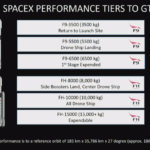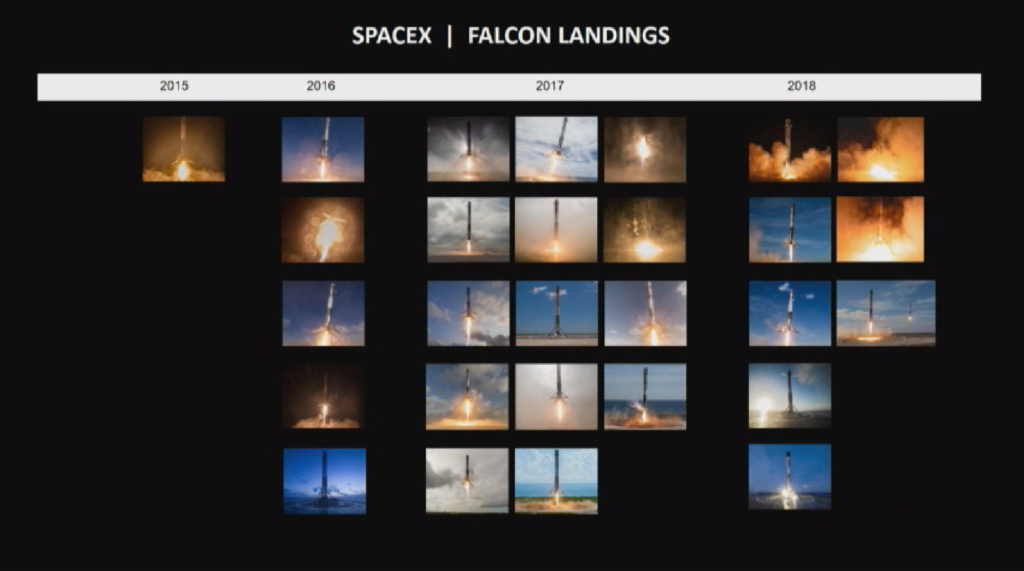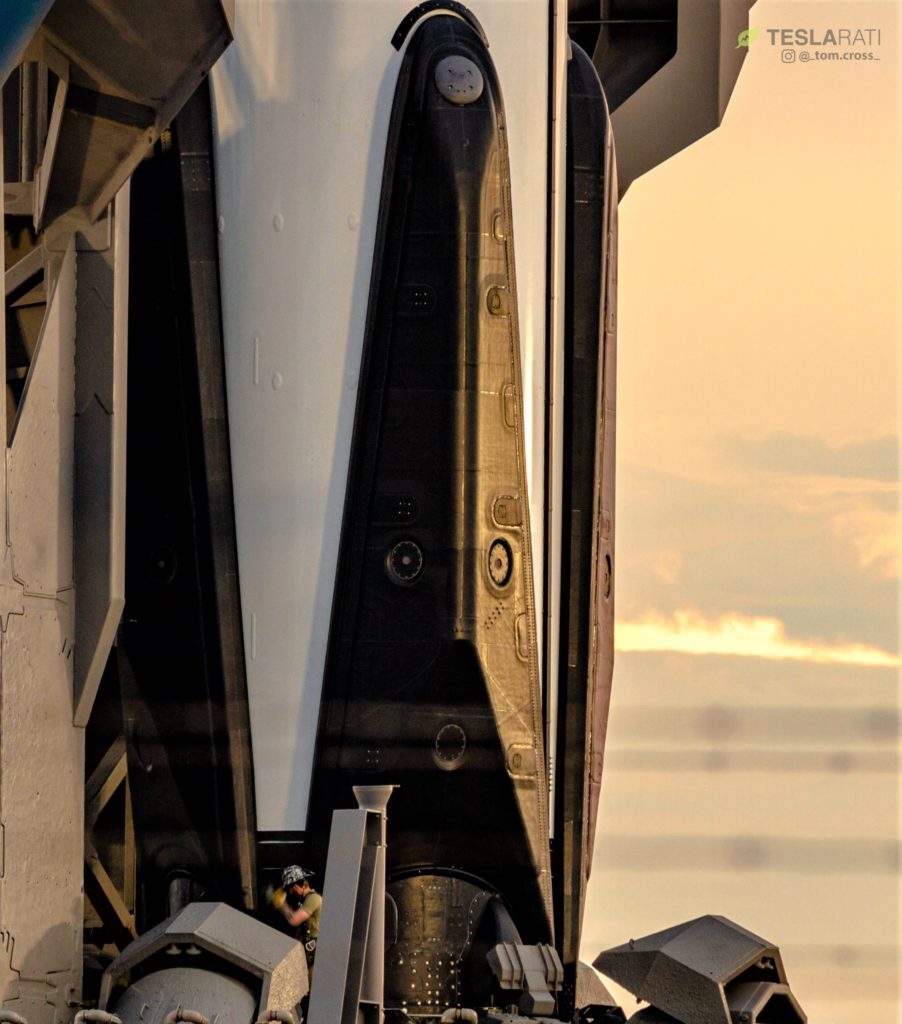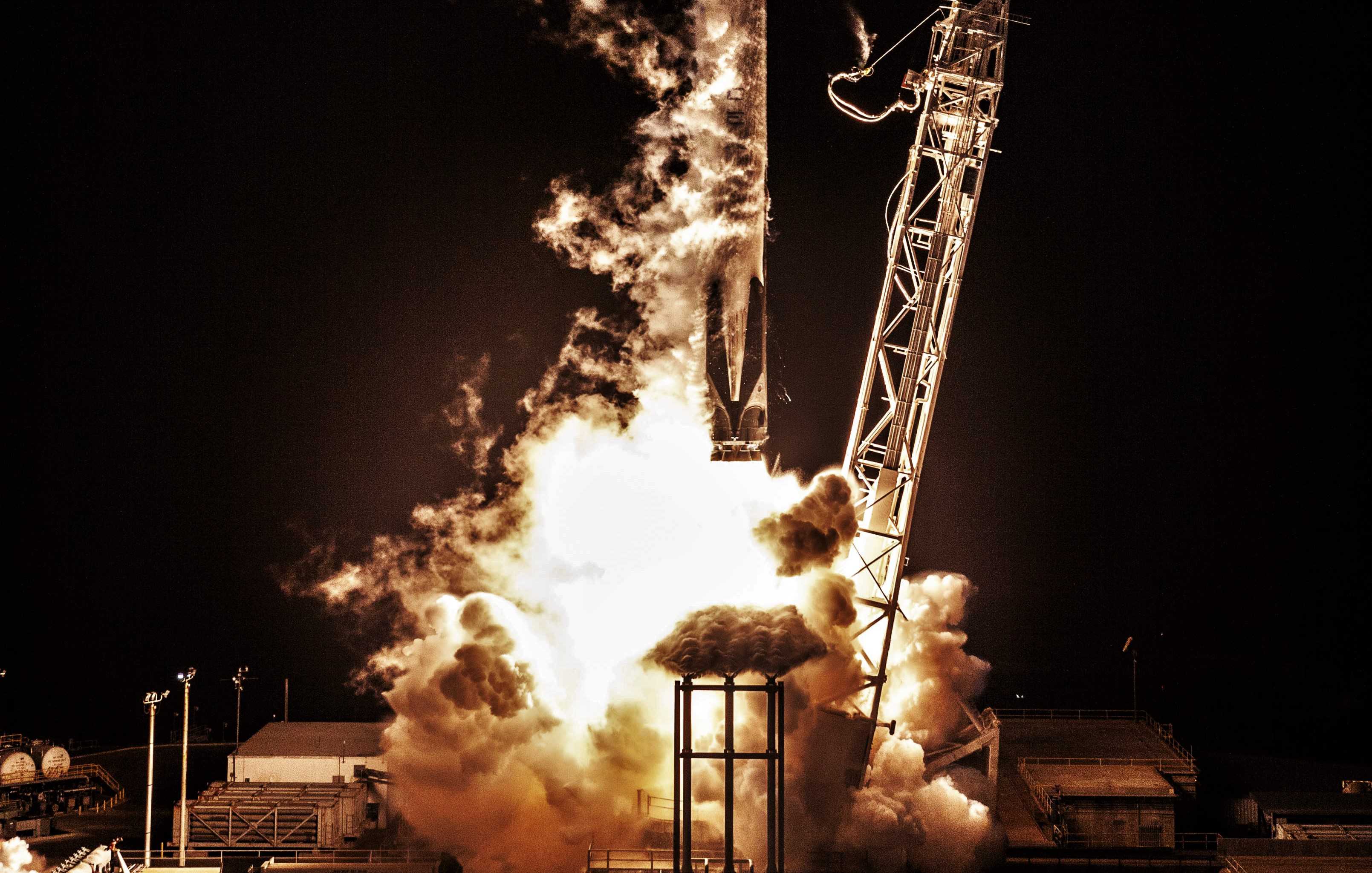

SpaceX
SpaceX plans Falcon 9 satellite launch from Pad 39A prior to Crew Dragon, Falcon Heavy
SpaceX plans to launch one final commercial Falcon 9 mission from Pad 39A before much of the historic facility’s availability is taken over Crew Dragon and Falcon Heavy launch needs, perhaps as soon as December 2018.
The reason for the decision to launch a routine Falcon 9 mission from 39A – while Launch Complex-40 (LC-40) is (presumably) perfectly available – is unknown, but it can likely be pinned down to launch schedule assurance and pad shakedowns ahead of the flight debut of Crew Dragon, NET January 2019.
SpaceX Falcon 9 launch with Es’hail-2 has turned up on the Eastern Range as NET November 14. This launch will take place from 39A. Cool photo from Nathan Barker (@NASA_Nerd) from this week below:
Range shows this is an ASDS landing for the booster.
As always, subject to change. pic.twitter.com/yydKuOVXrP
— NSF – NASASpaceflight.com (@NASASpaceflight) October 17, 2018
Dragons’ rule
Ultimately, the decision to move the launch of commercial communications satellite Es’Hail-2 to Pad 39A likely boils down to a desire to preserve the delay-sensitive CRS-16 Cargo Dragon launch (NET November 27) while also acting as a sort of ad-hoc shakedown for the pad. 39A has undergone a large number of Crew Dragon-related modifications – some visible but most not – and will have been dormant (at least launch-wise) since Falcon 9 Block 5’s debut six months prior.
Whether or not it’s truly needed, another Falcon 9 launch from the pad will presumably allow SpaceX to work out any new kinks in 39A’s updated ground support infrastructure and perhaps refamiliarize the company’s East Coast launch crew after half a year focused on LC-40 operations. Es’Hail-2 is a ~3000 kg (~6600 lb) geostationary communications satellite to be operated by Qatari company Es’hailSat once it arrives at its final operational orbit.
Despite a recent presentation from SpaceX VP of Reliability Hans Koenigsmann stating that Falcon 9 is capable of returning to launch site (RTLS; i.e. a Landing Zone recovery) while still placing 3500 kg into a geostationary transfer orbit (GTO), SpaceX has filed this launch as an ASDS (autonomous spaceport drone ship) recovery, meaning that it will land aboard Of Course I Still Love You (OCISLY) shortly after launch. Delayed from August 2018, SpaceX may be trying to partially make up for that slip by placing Es’Hail-2 sat in as high of a transfer orbit as possible, potentially cutting weeks or even months off of the time required for the satellite to climb uphill to its operational orbit.
- A welcome update to SpaceX’s Falcon 9 and Heavy performance with and without booster recovery. (SpaceX)
- SpaceX’s most recent Florida launch was in early September. (Tom Cross)
An East Coast lull
Unusual for SpaceX in an otherwise meteoric year filled with numerous major ‘firsts’ and the company’s most productive launch cadence yet, there will be a two-month lull in launches from the East Coast between Telstar 18V (September 10) and Es’Hail-2 (NET November 14), interrupted only by the spectacular October 7 launch of SAOCOM 1A in California. Barring any additional issues, SpaceX will likely crest its 2017 launch record (18 missions) by 3 or 4 missions, not quite the 25-30 launches much of the company’s leadership was probably hoping for, but still an extremely impressive number.
Despite the fact that launch delays are never pleasant (much like if Christmas were pushed back weeks or months to wait for sleigh and present availability), the willingness to significantly delay launches or fall short of targets (assuming payload availability has not been the long pole) is actually a very good thing. Within reason, inconvenient delays tend to serve as evidence that SpaceX is not succumbing to quite the same level of “Go fever” and manager/engineer/technician disconnection that has arguably been responsible for a huge number of launch failures, particularly for NASA’s Space Shuttle.
- SpaceX has already launched 17 successful missions in 2018, one shy of 2017’s record.
- Plenty of landings, too…
- The second Block 5 booster, B1047, debuted at LC-40 on July 21. (Tom Cross)
Best described as the point at which non-technical pressures to launch (cost-saving, internal and external politics, general face-saving) far outweigh the voices of the engineers and technicians responsible for reliably designing, building, and launching rockets, “Go fever” is demonstrably one of the worst things that can occur in spaceflight-oriented organizations, where the consequences of even the tiniest failures can often be amplified into total mission and vehicle failures and even the death of employees or astronauts. It may be unpleasant as an unaffiliated follower or fan and is likely far less pleasant still as an employee or manager, but it is undeniably preferable to succeed after weeks or months of delays than to fail catastrophically while staying on schedule.
Speaking of schedules, Es’Hail-2 (39A) is NET Nov. 14, followed by SSO-A (SLC-4E, Vandenberg) NET Nov. 19 and SpaceX’s 16th operational ISS resupply mission – CRS-16 – on Nov. 27th from Pad 40. Heading into the last month of 2018, SpaceX will launch the first of a fleet of new GPS III satellites for the USAF (NET Dec. 15) and finish off the year with a Vandenberg buzzer-beater, the eighth and final Iridium NEXT launch, NET Dec. 30.
For prompt updates, on-the-ground perspectives, and unique glimpses of SpaceX’s rocket recovery fleet check out our brand new LaunchPad and LandingZone newsletters!
News
SpaceX launches Ax-4 mission to the ISS with international crew
The SpaceX Falcon 9 launched Axiom’s Ax-4 mission to ISS. Ax-4 crew will conduct 60+ science experiments during a 14-day stay on the ISS.
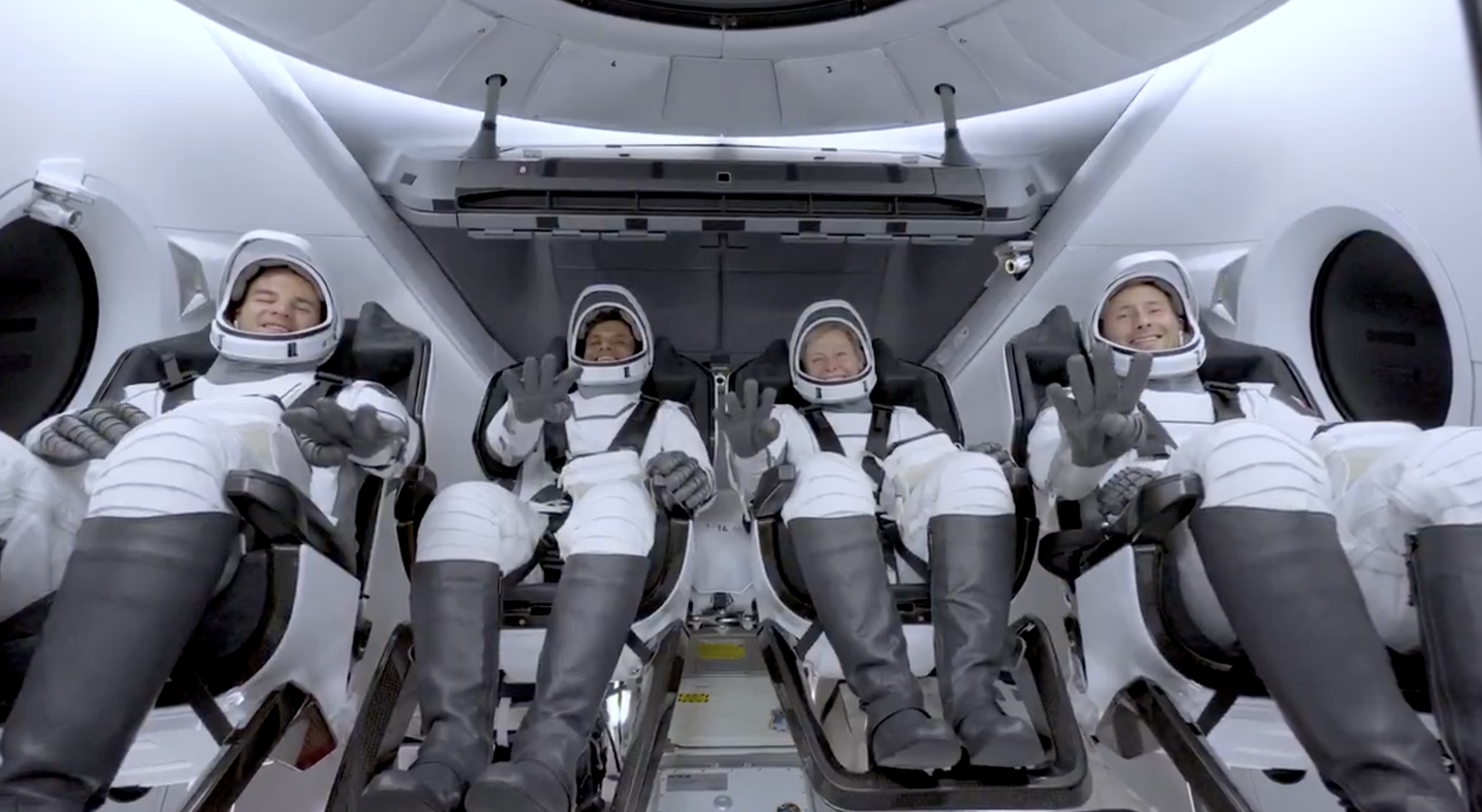
SpaceX launched the Falcon 9 rocket kickstarting Axiom Space’s Ax-4 mission to the International Space Station (ISS). Axiom’s Ax-4 mission is led by a historic international crew and lifted off from Kennedy Space Center’s Launch Complex 39A at 2:31 a.m. ET on June 25, 2025.
The Ax-4 crew is set to dock with the ISS around 7 a.m. ET on Thursday, June 26, 2025. Axiom Space, a Houston-based commercial space company, coordinated the mission with SpaceX for transportation and NASA for ISS access, with support from the European Space Agency and the astronauts’ governments.
The Ax-4 mission marks a milestone in global space collaboration. The Ax-4 crew, commanded by U.S. astronaut Peggy Whitson, includes Shubhanshu Shukla from India as the pilot, alongside mission specialists Sławosz Uznański-Wiśniewski from Poland and Tibor Kapu from Hungary.
“The trip marks the return to human spaceflight for those countries — their first government-sponsored flights in more than 40 years,” Axiom noted.
Shukla’s participation aligns with India’s Gaganyaan program planned for 2027. He is the first Indian astronaut to visit the ISS since Rakesh Sharma in 1984.
Axiom’s Ax-4 mission marks SpaceX’s 18th human spaceflight. The mission employs a Crew Dragon capsule atop a Falcon 9 rocket, designed with a launch escape system and “two-fault tolerant” for enhanced safety. The Axiom mission faced a few delays due to weather, a Falcon 9 leak, and an ISS Zvezda module leak investigation by NASA and Roscosmos before the recent successful launch.
As the crew prepares to execute its scientific objectives, SpaceX’s Ax-4 mission paves the way for a new era of inclusive space research, inspiring future generations and solidifying collaborative ties in the cosmos. During the Ax-4 crew’s 14-day stay in the ISS, the astronauts will conduct nearly 60 experiments.
“We’ll be conducting research that spans biology, material, and physical sciences as well as technology demonstrations,” said Whitson. “We’ll also be engaging with students around the world, sharing our experience and inspiring the next generation of explorers.”
SpaceX’s Ax-4 mission highlights Axiom’s role in advancing commercial spaceflight and fostering international partnerships. The mission strengthens global space exploration efforts by enabling historic spaceflight returns for India, Poland, and Hungary.
News
Starlink Cellular’s T-Mobile service to grow with third-party app data
From Oct 2025, T-Satellite will enable third-party apps in dead zones! WhatsApp, X, AccuWeather + more coming soon.
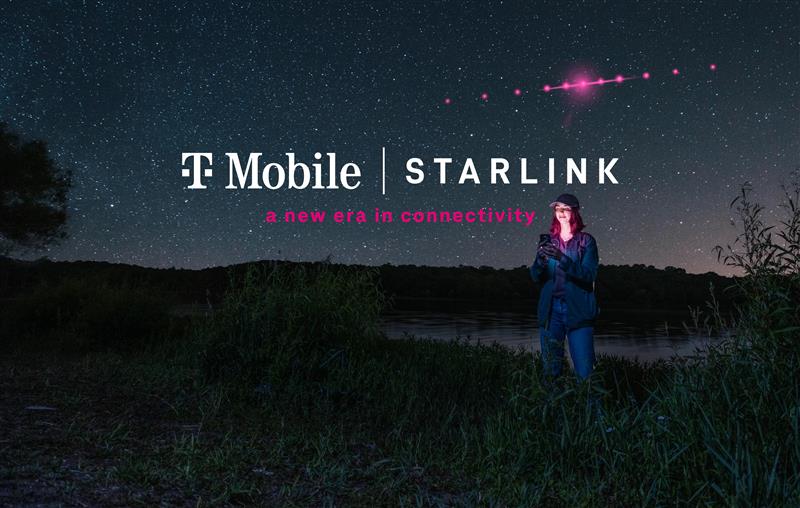
Starlink Cellular’s T-Mobile service will expand with third-party app data support starting in October, enhancing connectivity in cellular dead zones.
T-Mobile’s T-Satellite, supported by Starlink, launches officially on July 23. Following its launch, T-Mobile’s Starlink Cellular service will enable data access for third-party apps like WhatsApp, X, Google, Apple, AccuWeather, and AllTrails on October 1, 2025.
T-Mobile’s Starlink Cellular is currently in free beta. T-Satellite will add MMS support for Android phones on July 23, with iPhone support to follow. MMS support allows users to send images and audio clips alongside texts. By October, T-Mobile will extend emergency texting to all mobile users with compatible phones, beyond just T-Mobile customers, building on its existing 911 texting capability. The carrier also provides developer tools to help app makers integrate their software with T-Satellite’s data service, with plans to grow the supported app list.
T-Mobile announced these updates during an event celebrating an Ookla award naming it the best U.S. phone network, a remarkable turnaround from its last-place ranking a decade ago.
“We not only dream about going from worst to best, we actually do it. We’re a good two years ahead of Verizon and AT&T, and I believe that lead is going to grow,” said T-Mobile’s Chief Operating Officer Srini Gopalan.
T-Mobile unveiled two promotions for its Starlink Cellular services to attract new subscribers. A free DoorDash DashPass membership, valued at $10/month, will be included with popular plans like Experience Beyond and Experience More, offering reduced delivery and service fees. Meanwhile, the Easy Upgrade promotion targets Verizon customers by paying off their phone balances and providing flagship devices like the iPhone 16, Galaxy S25, or Pixel 9.
T-Mobile’s collaboration with SpaceX’s Starlink Cellular leverages orbiting satellites to deliver connectivity where traditional networks fail, particularly in remote areas. Supporting third-party apps underscores T-Mobile’s commitment to enhancing user experiences through innovative partnerships. As T-Satellite’s capabilities grow, including broader app integration and emergency access, T-Mobile is poised to strengthen its lead in the U.S. wireless market.
By combining Starlink’s satellite technology with strategic promotions, T-Mobile is redefining mobile connectivity. The upcoming third-party app data support and official T-Satellite launch mark a significant step toward seamless communication, positioning T-Mobile as a trailblazer in next-generation wireless services.
News
Starlink expansion into Vietnam targets the healthcare sector
Starlink aims to deliver reliable internet to Vietnam’s remote clinics, enabling telehealth and data sharing.

SpaceX’s Starlink expansion into Vietnam targets its healthcare sector. Through Starlink, SpaceX seeks to drive digital transformation in Vietnam.
On June 18, a SpaceX delegation met with Vietnam’s Ministry of Health (MoH) in Hanoi. SpaceX’s delegation was led by Andrew Matlock, Director of Enterprise Sales, and the discussions focused on enhancing connectivity for hospitals and clinics in Vietnam’s remote areas.
Deputy Minister of Health (MoH) Tran Van Thuan emphasized collaboration between SpaceX and Vietnam. Tran stated: “SpaceX should cooperate with the MoH to ensure all hospitals and clinics in remote areas are connected to the StarLink satellite system and share information, plans, and the issues discussed by members of the MoH. The ministry is also ready to provide information and send staff to work with the corporation.”
The MoH assigned its Department of Science, Technology, and Training to work with SpaceX. Starlink Vietnam will also receive support from Vietnam’s Department of International Cooperation. Starlink Vietnam’s agenda includes improving internet connectivity for remote healthcare facilities, developing digital infrastructure for health examinations and remote consultations, and enhancing operational systems.
Vietnam’s health sector is prioritizing IT and digital transformation, focusing on electronic health records, data centers, and remote medical services. However, challenges persist in deploying IT solutions in remote regions, prompting Vietnam to seek partnerships like SpaceX’s.
SpaceX’s Starlink has a proven track record in healthcare. In Rwanda, its services supported 40 health centers, earning praise for improving operations. Similarly, Starlink enabled remote consultations at the UAE’s Emirati field hospital in Gaza, streamlining communication for complex medical cases. These successes highlight Starlink’s potential to transform Vietnam’s healthcare landscape.
On May 20, SpaceX met with Vietnam’s Ministry of Industry and Trade, announcing a $1.5 billion investment to provide broadband internet, particularly in remote, border, and island areas. The first phase includes building 10-15 ground stations across the country. This infrastructure will support Starlink’s healthcare initiatives by ensuring reliable connectivity.
Starlink’s expansion in Vietnam aligns with the country’s push for digital transformation, as outlined by the MoH. By leveraging its satellite internet expertise, SpaceX aims to bridge connectivity gaps, enabling advanced healthcare services in underserved regions. This collaboration could redefine Vietnam’s healthcare infrastructure, positioning Starlink as a key player in the nation’s digital future.
-

 Elon Musk1 day ago
Elon Musk1 day agoTesla investors will be shocked by Jim Cramer’s latest assessment
-

 News6 days ago
News6 days agoTesla Robotaxi’s biggest challenge seems to be this one thing
-

 News2 weeks ago
News2 weeks agoTesla’s Grok integration will be more realistic with this cool feature
-

 Elon Musk2 weeks ago
Elon Musk2 weeks agoElon Musk slams Bloomberg’s shocking xAI cash burn claims
-

 News2 weeks ago
News2 weeks agoTesla China roars back with highest vehicle registrations this Q2 so far
-

 News2 weeks ago
News2 weeks agoTexas lawmakers urge Tesla to delay Austin robotaxi launch to September
-

 News2 weeks ago
News2 weeks agoTesla dominates Cars.com’s Made in America Index with clean sweep
-

 Elon Musk1 week ago
Elon Musk1 week agoFirst Look at Tesla’s Robotaxi App: features, design, and more

